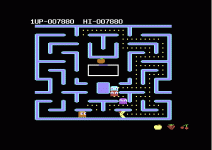An externally hosted image should be here but it was not working when we last tested it.
Don't bother to explain, you are so close to prove wrong 50 years of solid state physics that I can already see a Nobel coming

Indeed! All this proves is that your testing methodology is insufficient, not that cables have some directionality.Don't bother to explain, you are so close to prove wrong 50 years of solid state physics that I can already see a Nobel coming
How about posting 10 tests of the same cable in the same direction, disconnecting and reattaching the cable between each run. How consistent are your results?
David
PS Error bars are your friend.
To the Moderators: I think this thread and some others like it demonstrate the need for a Psychoacoustics Topic. And not buried in Everything Else.
What say you?
What say you?
Looks like a ground loop. I get the same result hooking my scope up to a circuit at the same time as the spectrum analyzer, the latter on a different electrical outlet.
Well done, Simon 7000. We have them on the run, NOW! ;-)
Good afternoon John, how are you today?
You lost me, what does any of that have to do with the validity of the boconner 'three thoughts' you praised? He argued the opposite, that subtle effects are not permitted for consideration based, incredibly, on the premise that it contradicts advertising copy.I guess the extremists that run out of the room when the "propeller-heads" arrive, are a straw man. snip snip snip
Last edited:
Well done, Simon 7000. We have them on the run, NOW! ;-)
"Well, The Rain Exploded With A Mighty Crash As We Fell Into The Sun,
And The First One Said To The Second One There I Hope You're Having Fun.
Band On The Run, Band On The Run." Wings.
cheers
good idea
[/B]
Or perhaps, more appropriately,😱 a psychoanalysis thread 😱
[/B]
To the Moderators: I think this thread and some others like it demonstrate the need for a Psychoacoustics Topic. And not buried in Everything Else.
What say you?
Or perhaps, more appropriately,😱 a psychoanalysis thread 😱

Last edited:
. . . . . . . . . As I suggest earlier, the 'party of science' casts any claim of audible differences as sonic homeopathy. Should however a physical and scientific basis be found for a report - say as SY discusses earlier about triboelectric effects on Teflon cables or circuit instability caused by HF reactance - it gets co-opted and you're back to calling the other side names. It's question begging.
Doesn't this 'co-opting' say that science is impartial. If it works it works, no matter how or who discovered it.
Testing claims about cables
Quote from a subjective review magazine, dated November 2009, under the heading: “The 18 Greatest Bargains in High-End Audio”:
(a) they should be taken on face value, they don’t need to be tested, or testing doesn’t work anyhow, and therefore audio enthusiasts should just go out and buy theses cables (including the $105 power cord) in order to get “the most cost effective upgrade possible in an entry level system”; or
(b) the claims might be false, either deliberately (to make money) or simply false despite the fact the manufacturer and the reviewer truly believes they make a difference.
If you think (a) then you and others are in danger of being ripped off big time, but that’s your choice.
If you think (b) then we test the claims. So, we need a test that:
For those who don't believe that double tests are the way to go, what’s your suggested alternative test and protocol?
Quote from a subjective review magazine, dated November 2009, under the heading: “The 18 Greatest Bargains in High-End Audio”:
“Although we have experience only with Transparent’s lower-priced offerings (at the moment), what we’ve heard has been extremely impressive. The $85 The Link interconnect brings more than a taste of high-end interconnects to an entry-level price. Similarly, the $200 The Wave speaker cable is a bargain, offering superior tonality, wider dynamics, and a more open soundstage. The $105 High-Performance Powerlink AC cable is a vast improvement over stock AC cords, and just might be the most cost-effective upgrade possible in an entry-level system. The Powerwave 8 conditioner is also an extremely cost-effective upgrade, rendering wider dynamics, smoother timbres, and a greater sense of musical involvement.”
Given these claims, either you think:
(a) they should be taken on face value, they don’t need to be tested, or testing doesn’t work anyhow, and therefore audio enthusiasts should just go out and buy theses cables (including the $105 power cord) in order to get “the most cost effective upgrade possible in an entry level system”; or
(b) the claims might be false, either deliberately (to make money) or simply false despite the fact the manufacturer and the reviewer truly believes they make a difference.
If you think (a) then you and others are in danger of being ripped off big time, but that’s your choice.
If you think (b) then we test the claims. So, we need a test that:
- can distinguish between the claimed cable and a cheap, but well constructed alternative;
- provides test results that can substantiate the claims of “rendering wider dynamics, smoother timbres, and a greater sense of musical involvement” or “superior tonality, wider dynamics, and a more open soundstage”. These are not “maybe yes, maybe no” claims. The claims for the cables should be easily and readily heard when switching cables. No minor improvements here, but differences that could be easily characterised as “extremely impressive”, compared with the cheap cable.
- takes into account perceived bias in people, either deliberate (to increase sales) or just misguided bias (e.g. bias because you are listening to the more expensive cable);
- takes into account the placedo effect;
- can produce the same results in different locations and at different times, by different people following the agreed protocol. That is, the test is consistent.
For those who don't believe that double tests are the way to go, what’s your suggested alternative test and protocol?
For those who don't believe that double tests are the way to go, what’s your suggested alternative test and protocol?
Yeah, good luck waiting for a response, other than the "positive controls" boilerplate

...it's just that I wouldn't want a speaker that works fine with one amp but not with another.
Ooohh! Stay away from the Quad ESL, then. Very sensitive to amps, especially when double stacked. A shame, as it's a great speaker. Don't know how it reacts to cables, never tried.
I do like a speaker that's more versatile, that's for sure.
Don't bother to explain, you are so close to prove wrong 50 years of solid state physics that I can already see a Nobel coming
Thanks, that is very nice of you to say. It would be very nice to hear from the Nobel committee... again. (OT interesting event)
What is shown is at the level of distortion around 10ppb at 2.25khz, for more details read the complete article.
If you think discrete matter behaves absolutely according to linear equations you may wish to brush up on your physics.
I have shown the demo to a few other folks see
Interesting cable blurb in Audio eXpress... - 2 Channel Debate - All things HiFI and AV - HiFi WigWam - HiFi Forum
Oh yes, there is a reasonable mechanism to explain the measured results and it is not micro-diodes. I still have to do a bit more research to narrow down the exact cause and then determine to patent or publish.
What is shown is at the level of distortion around 10ppb at 2.25khz.
<snip>
Simon, you are definitely not helping the subjectivists with such posts. Not that I care much, but you are at risk to be renegated by both teams

Good luck with that Nobel. And meantime take care of that turkey!
Last edited:
- Status
- Not open for further replies.
- Home
- Design & Build
- Parts
- I don't believe cables make a difference, any input?

